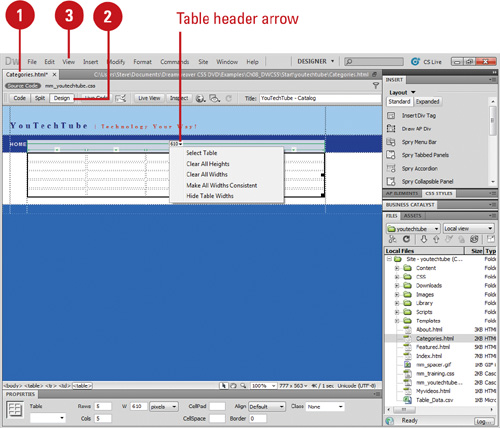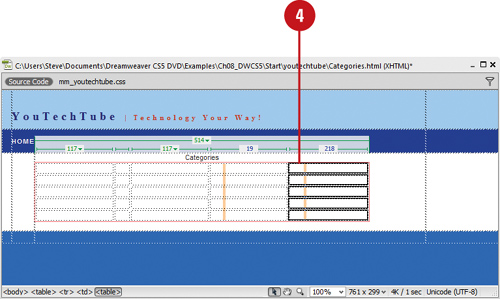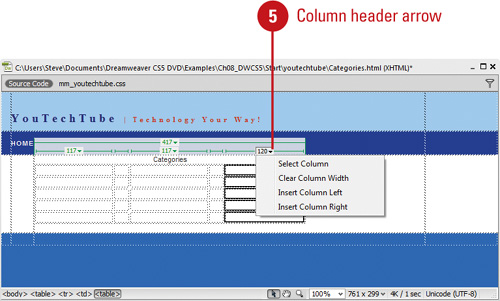After you create the initial table and
cells, you can select, resize, move, or even delete the table and cells
to fine tune it. When you move or resize a cell in a table, there are a
few things you need to avoid. These include overlapping cells, crossing
the boundaries of the table, and making the cell smaller than its
contents. Before you can resize, move, or delete a table or cell, you
need to select it first. You can select the table by clicking the table
header arrow at the top or an outside table edge, or select a cell by
clicking a cell edge. When you select the table or place the insertion
point in the table, the widths of tables and cells appear at the top or
bottom of the table in pixels or as a percentage of the page width. Next
to the widths are arrows for the table and column headers you can use
to display a menu with related commands. When you point to a table edge,
Dreamweaver highlights it to make it easier to see.
Modify the Table and Cells
1. Open the Web page containing the table you want to modify.
 |
2. Click the Design button to display the page in Design mode.
| 3.Click the View menu, point to Table Mode, and then click Standard Mode or Expanded Tables Mode.
- You can also click the Standard or Expanded button on the Layout tab on the Insert panel.
|
4. To modify the table:
- Select Table. Click in the table, click the Modify menu, point to Table, and then click Select Table, or click the table header arrow, and then click Select Table.
Timesaver
Click in the table, and then press Ctrl+A (Win) to select it.
- Resize Table. Select the table, and then drag the control points on the right table edge to expand or contract the table.
- Delete Table. Select the table, and then press the Backspace (Win) or Delete (Mac) key to remove the table.
 |
5. To modify columns or rows:
- Select Columns. Click in the column, click the column header arrow, and then click Select Column.
- Select Columns or Rows. Click the left edge of a row or the top edge of a column, or drag to select multiple columns or rows.
- Resize Columns or Rows.
Drag the border to change the size; for a column, the table keeps its
width. To change change column width and keep column width, shift-drag
the column border.
 |
6. To modify the individual cells:
 |
|